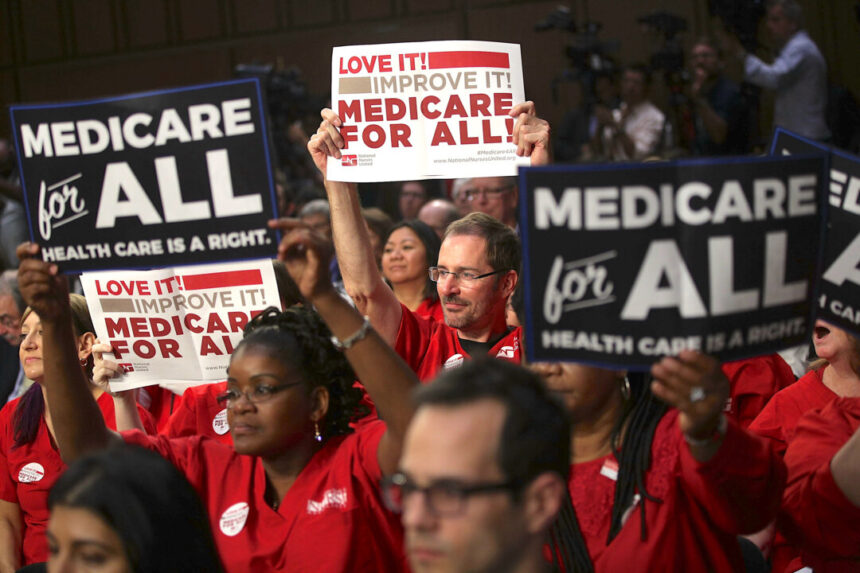The report stated that in 2022, 56 percent of all government assistance payments went to the elderly, primarily for Medicare. This data highlights the growing reliance of Americans on government support, with transfer payments more than doubling over the past 50 years. Transfer payment programs include Medicare, Medicaid, Social Security, unemployment and disability benefits, food stamps, and veterans’ benefits. The increase in transfer payments has crowded out private income from wages and investments, with transfer payments accounting for 18 percent of U.S. total income today compared to 8 percent in 1970. This shift is largely driven by demographic factors, as the U.S. population is aging rapidly. The percentage of Americans 65 years and older increased from 13.1 percent in 2010 to 17.3 percent in 2022, while the percentage of Americans under the age of 20 decreased from 26.9 percent to 24.4 percent during the same period.
The EIG report also highlighted the significant rise in health care costs, with total health spending in the United States increasing from $74.1 billion in 1970 to $4.5 trillion in 2022. This increase in costs has contributed to the growth in government assistance payments, with 56 percent of such payments in 2022 going to the elderly, primarily for Medicare.
The growth in transfer payments has strained state and federal budgets, with unfunded public pension liabilities reaching $1.59 trillion as of 2023. The U.S. federal deficit is currently $1.8 trillion, and interest payments on government debt have risen from $31 billion in 1970 to over $1 trillion today.
Some analysts argue that this growing dependence on government support comes at the expense of personal autonomy and responsibility. The trend towards increased government reliance is seen as a result of politicians’ promises of ‘free lunches’ to buy votes and the lack of spending constraints faced by politicians. The EIG report created maps showing the percentage of income coming from transfer payments by county, revealing that more than half of U.S. counties reported significant dependence on government support. Young individuals often leave rural areas for better job opportunities in urban cities, leading to an increase in the retired population and a decrease in the number of individuals earning private wages in small towns.
As societies industrialize and urbanize, there is a shift from rural farming to city living, accompanied by a rise in women joining the workforce. This trend results in declining fertility rates, a phenomenon observed globally over the past few decades. In the United States, this trend has been ongoing for two centuries.
In 1825, the average American woman gave birth to over six children, but as the country industrialized, this number dropped significantly. The minimum fertility rate to maintain a population is 2.1 children per woman, a threshold the US fell below in 1973. Despite minor increases in fertility rates until 2008, the current rate stands at around 1.8 children per woman.
While countries like Japan experience population decline due to low fertility rates, the US has seen continuous growth primarily driven by immigration rather than native-born Americans having children. The Congressional Budget Office predicts that without immigration, the US population will start shrinking by 2040.
The growing reliance on the government for income raises concerns about balancing economic security for dependents with overall economic growth and prosperity. The redistribution of wealth through taxes can hinder economic prosperity by creating distortions in the economy and administrative costs.
Economist Arthur Laffer warns that excessive taxation can impede economic growth and reduce the tax base. As a result, governments face challenges in financing social programs while grappling with mounting interest payments on the federal debt.
To sustain transfer payments, governments can either cut benefits, raise taxes, or focus on increasing economic growth and private income. Investments in research, innovation, immigration policies, and tax regulations that foster economic dynamism can help boost economic growth.
Despite financial challenges, the United States is in a better position compared to other Western nations due to its selective and cost-effective transfer systems. While Europe’s welfare programs aim to support middle-class lifestyles, American entitlement programs focus on providing a safety net against poverty with stricter eligibility criteria for benefits. Please rewrite this sentence for me.
Source link






